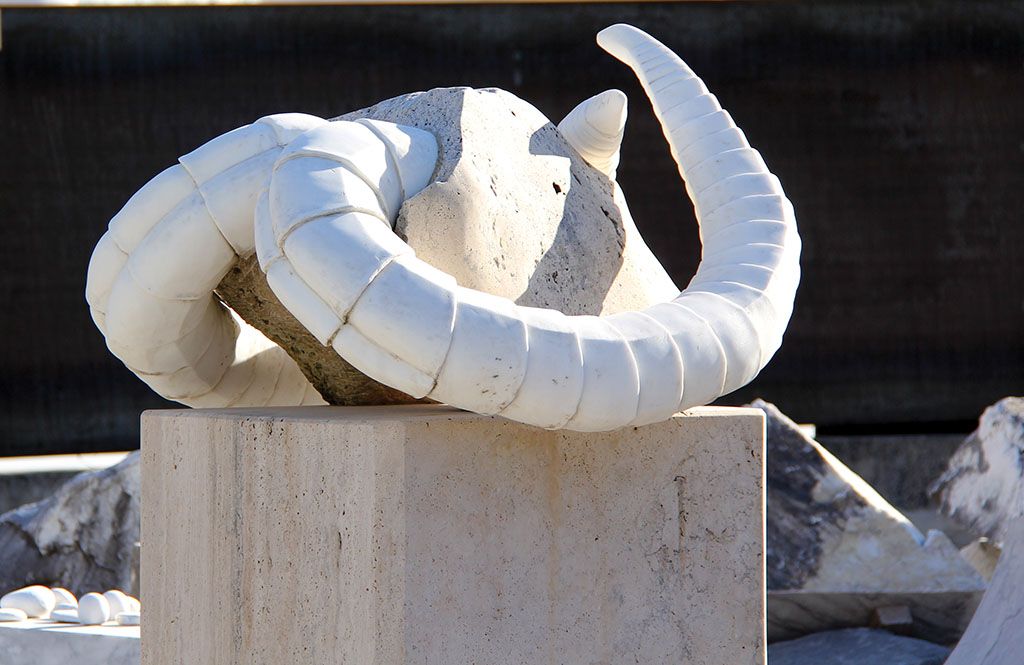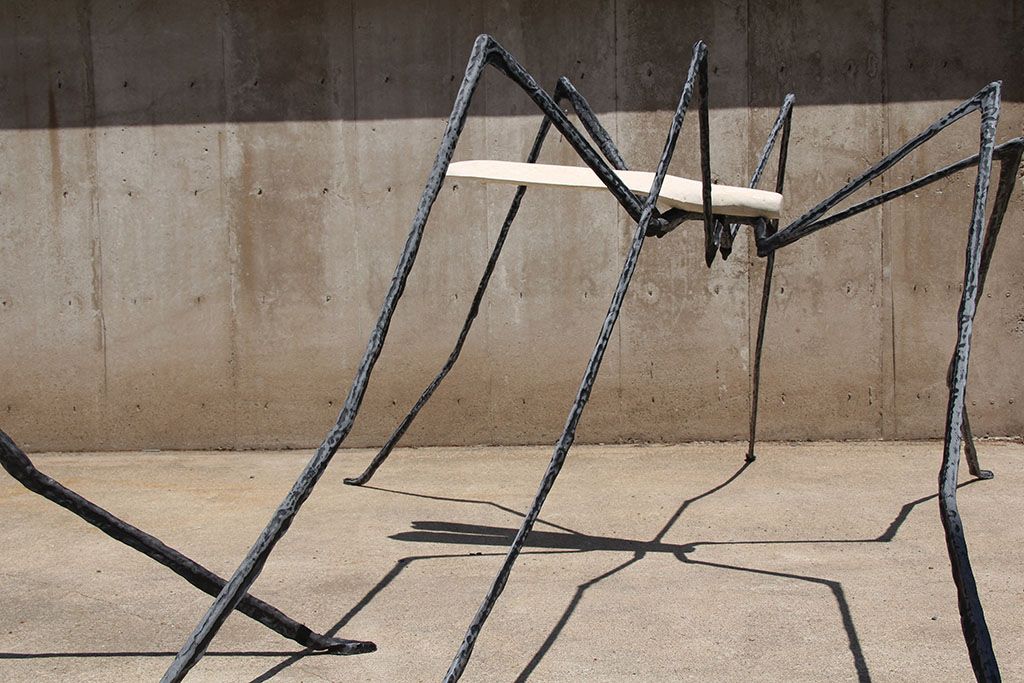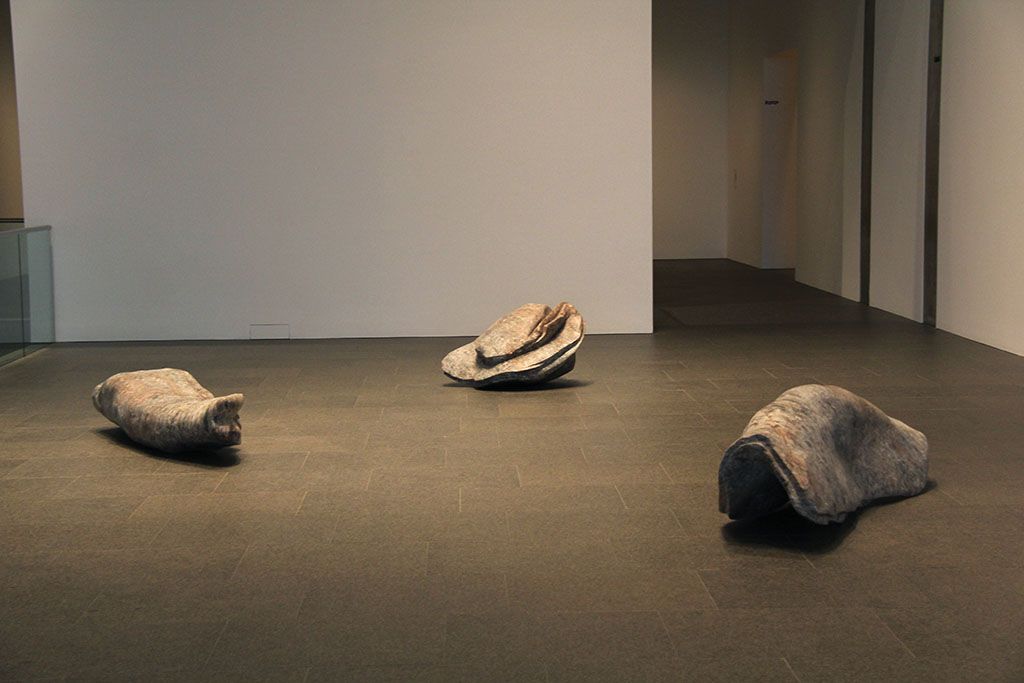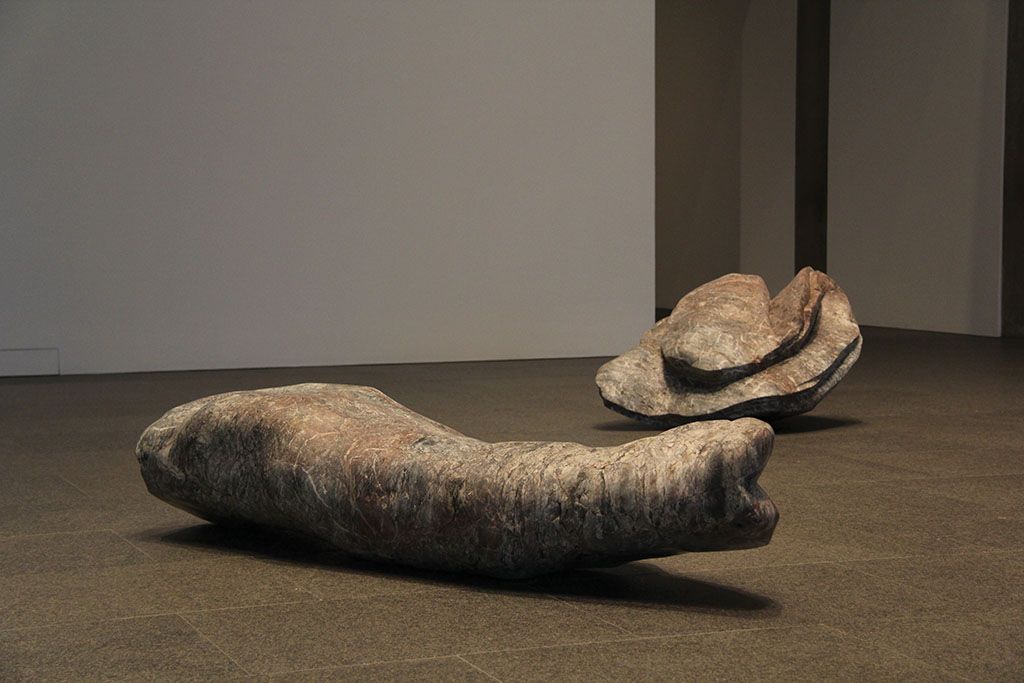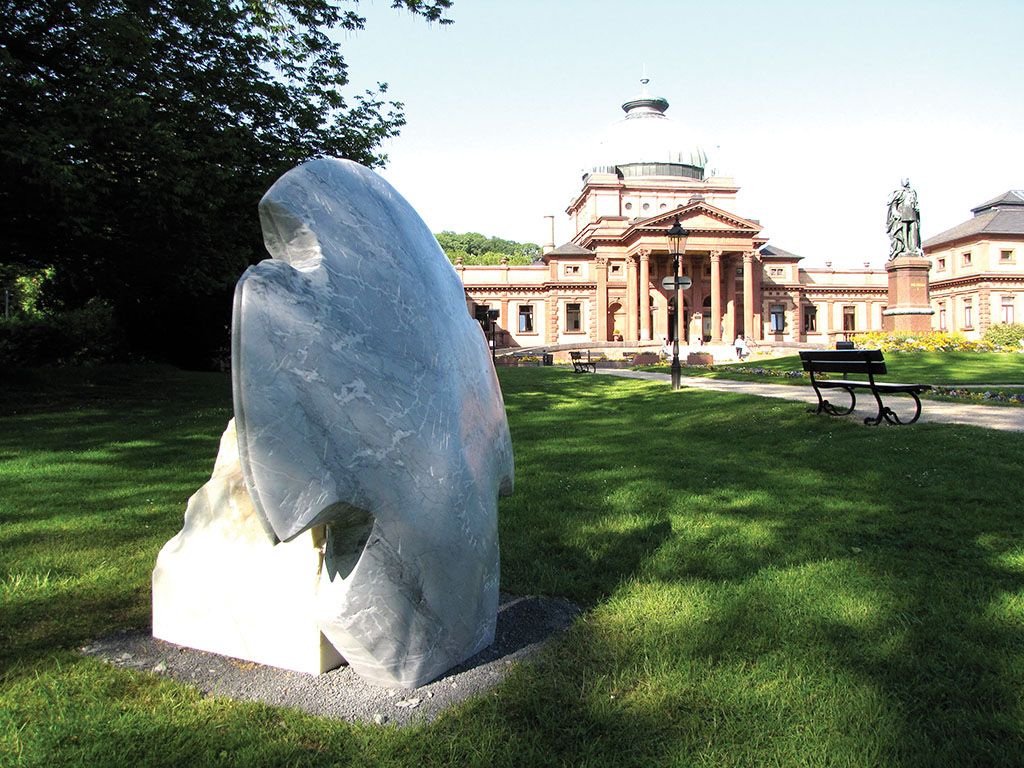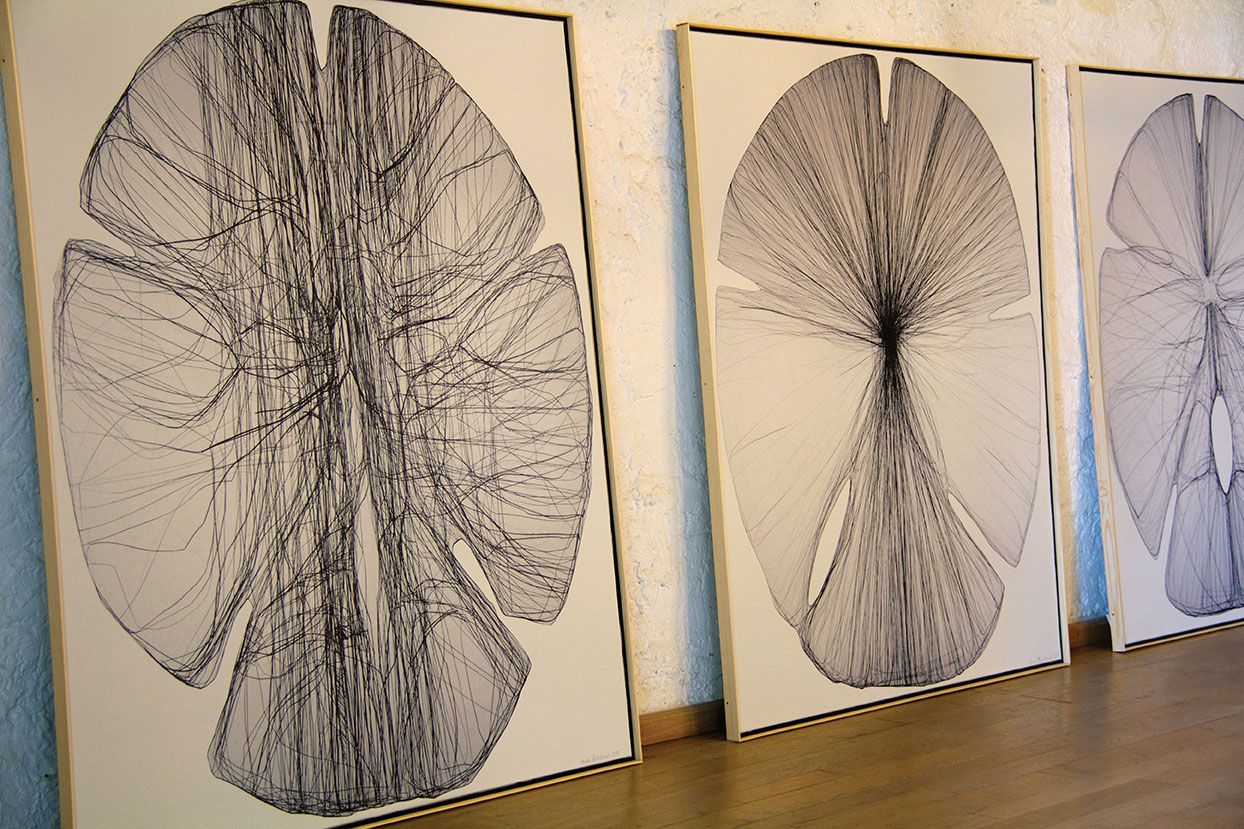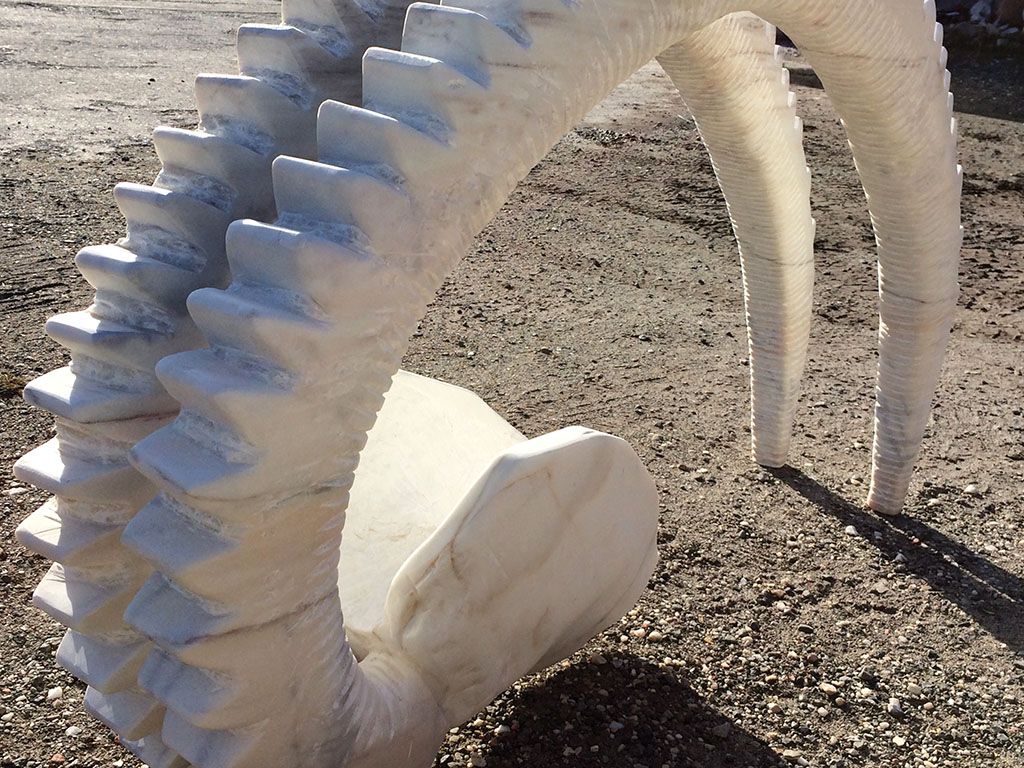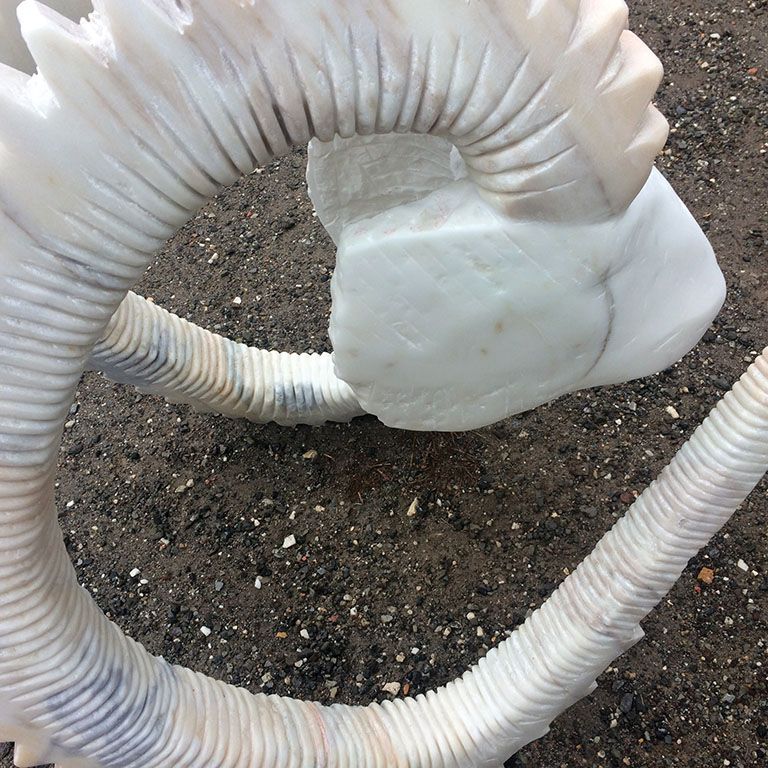A search for meaning. An Interview with Vanessa Paschakarnis
by Cheryl Bell for Billie, the magazine of the Beaverbrook Art Gallery in Fredericton, NB, Canada.
Cheryl Bell: I am speaking to you in Italy, where you work part of the year, you were born and received some of your art education in Germany, you also studied at NSCAD and now spend part of your year living in LaHave, Nova Scotia. Do you see yourself as being from any one place?
Vanessa Paschakarnis: I was born in Germany, but I knew early on that I didn’t want to stay in Germany. I travelled a lot and made sure I learned English, French, Italian and other languages. I studied at a number of art academies and then finished with a master’s degree at the Art Academy in Berlin. I studied sculpture, so I was quite focused early on. I was also able to do an exchange year. Most of us at the academy had the chance to spend one year away studying and then return to Berlin for our thesis year. I kind of knew I wanted to go to Canada. It’s a place where I really thought I wanted to go at some point and I knew it was a place where you can immigrate. I had the opportunity to go out west and visit the Emily Carr University of Art and Design, but I decided I wouldn’t fit in there. So I asked my professor and he told me about NSCAD. NSCAD was the only art college in Canada that was recognised at the university level in Germany and at that time – 1995 – it has just started its exchange program. I was the first one to go. I jumped in the cold water and headed to Halifax!
I was just going to spend three months in Canada. At first I thought, “oh, my goodness, what did I do?” I had spent three weeks in New York City before arriving at what seemed the edge of the world. I had been studying sculpture in Berlin, but I wanted to immerse myself in printmaking and photography and so on while I was in Canada. But I had a car and I started hiking, and then I dropped all my classes and decided that I needed to do sculpture. I ended up staying at NSCAD for a full year and having a big exhibition. Then I went back and finished my degree in Germany. After that, I applied for grad school at NSCAD. And then I came and immigrated and started teaching, even though I’d never planned to teach.
CB: What was it about your NSCAD experience that convinced you to focus your attention on sculpture?
VP: I think this relates to your first question in that I feel at home in Atlantic Canada, but I don’t feel that I belong in any one place. I’ve moved around a lot and had some profound experiences. But in Nova Scotia I found a place. It really talked to me and was inspiring for me. My language is sculpture and I felt that I needed to do work in my medium to express myself. At NSCAD, in the department that John [sculptor John Greer] created, it was wonderful for me because it was sculpture in service to the idea. The basis was conceptual art, which was an amazing way of approaching material. And you could do sculpture in any medium, including stone and bronze, whereas at my school in Germany at the time, it was almost taboo. I learned stone carving in Nova Scotia. When I went back to the art academy in Germany to do my final show, I used bronze and stone and my friends and colleagues were knocking at the sculptures and wondered “what is this?” So going to Nova Scotia and then returning to Germany was important for me. It enabled me to establish a visual language and I was starting to use it. And finding a place, too, was also important. I knew that I really wanted to go back to Nova Scotia.
CB: You say that you established a visual language in Nova Scotia and began to use it. Do you think that language was informed by the landscape here and the materials you were able to use, such as the Cape Breton marble found in your Shadows for Humans exhibition at the National Gallery of Canada?
VP: I think I found a place where I could articulate myself a lot better. I left Germany because the system was so rigid for a young artist. You couldn’t get a show until you had earned your way or had connections. In Canada, you do your work and you can have a show. I did shows right after I graduated and it helped me to develop a vocabulary in my language.
By coming to Nova Scotia, I realized how German my approach is. It’s a very philosophic, phenomenological approach to sculpture as an object, as a thing that is opposed to you as a person. What I love is creating spaces that become environments, things that I create on the ground plane with us. My interest is in the thing as the confrontational ‘other’ and the way we navigate the world by relating to objects and animals and things. More than other people. It’s more the world at large that I’m interested in rather than two people talking. It’s a big philosophical theme. As a student, I was very active in philosophy. Existentialism was something I was immersed in. I think it’s wonderful the way you feel the struggle when you walk or hike in Nova Scotia. I think that spatial relationship informs a lot of my work and the way that you as a person engage with the natural world around you. It doesn’t mean that I’m excluding the human world or the cultural world. It’s very basic subject matter I’m trying to get at, so I don’t like being too descriptive in my imagery. It’s things that you are kind of familiar with, but you can’t really put your finger on.
I really wanted to do a piece with that Cape Breton marble. It’s a very, very old marble and it’s from a quarry that is closed now. It’s a grey purple and it almost looks like rotten flesh. If you do figurative work, I don’t know what you would do with it. For me, for the shadows in the Shadows for Humans piece, it was the perfect material to work with.
Shadows are a large theme in my work. For me, a shadow is not two-dimensional, it’s a three-dimensional thing. As you stand in the light, you throw a shadow and it’s an amorphous mass. If somebody passes behind you they go through your shadow. I became very interested in how people perceive shadows as something negative, yet they only occur in a positive encounter with light. Shadows confirm that we are here and I find that very powerful.
I did one of my big shadow works for my thesis when I returned to Germany after my exchange studies in Nova Scotia. For my graduation show I did these nine rocks in the deep end of the dry swimming pool on campus. The rocks were half bronze and half sky blue – the colour of water. You could go into that swimming pool and immerse yourself with these rock-like shapes. I started to work with rocks that you find in the ocean, tumbled rock shapes. What I find fascinating about them is that they are evidence of their own making. The skin is very important in all my work. A lot of sculptors carve their work and then smooth and hide away all the marks they have made. I don’t. I carve right onto the surface and then I let you see all the marks that have come from my tools. I do smooth out, but in such a way that you are aware that this thing is made by me, and see the creation process.
If you see sculpture in a neutral space it looks sort of natural and familiar, but you know that it has been made for you to engage with. It is this basic playground that I want you to start to rub against and ask “Why is this here? Why am I looking at this thing?”
CB: Can you talk about what you are working on now?
VP: I’m working on a series based on Capricorn heads – small goats with large horns. People often tell me my animal heads are abstracted, which is not quite right because I know animals and I go out and find rocks that look like these shapes and then I remake them. It is the opposite of abstracting a form.
I am looking for a dynamic when I am looking for these rocks; it is not about an inspiration, but using these specific dynamics that exist and reshaping them to fit my ideas.
With these new sculptures it’s almost like walking through the desert and seeing the skulls and they are these things in themselves. I don’t think they appear to be dead and I don’t think you are missing a body to these things. It’s me wanting you to engage with the thing.
CB: Do you feel that the themes in your work are connected?
VP: Yes, they are. There are greater themes that all merge somewhere with the way we encounter the world and the way we place ourselves in the world in relation to other things. So I think they describe phenomena that confirm us as beings and our reality and our everyday life. The things that define us. My art is not funny and it’s not happy – and I hear that from people. And yet it is very optimistic because it gives the power to us and the responsibility, which I think is a very positive act. It’s stripped bare to the essentials. That’s where these things connect and they are about the ways we protect ourselves and open up to things and the way we are vulnerable.
The last series I worked on was the crane flies, which were exhibited first in a castle in Germany. They are large, large bugs, basically. The bodies are carved out of marble, they have tiny wings and oversized legs. There is a struggle, which is something I think you become aware of in my work: wanting to fly, wanting to walk, but feeling bound to the earth. But there is potential. These things appear very animated although they don’t walk.
I haven’t really shown these yet in Canada. I’m getting ready to apply for some shows. I’d like to get my work out more, but it’s been a bit challenging. I don’t work within a larger group of artists and I resist labels. For example, I feel at home in Atlantic Canada, but I’m not sure I see myself as an Atlantic Canadian artist. I feel like I fit within contemporary art, but I do work in a medium that people get scared of. It’s large and heavy, and some people think of stone as old fashioned. People tell me my art is serious. And it is. It is a search for meaning and it’s about finding your place in the world. I also think my art is inherently optimistic and positive, because I do think it is something we should be striving for.
CB: What do you think world politics will do to art like yours, which does transcend borders? Is art more important than before and will that importance be recognized?
VP: I do think art is important, particularly at times like this, when the politics of fear want to take over. It’s important for people to maintain their sanity by striving for the larger meaning in their life. I think art is essential and I do think you can transcend borders with art. It’s the only thing we have to communicate with and try to get over these nationalist tendencies that are in our world today, which is almost like a regression. It’s maddening when you think what we humans have achieved and it’s like turning back the clock. Art helps to open us up. And as an artist, you have to find a place where you can work. My working is part of my sanity.

